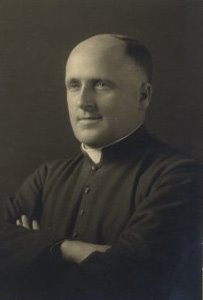|
Paule Baillargeon
Paule Baillargeon (born July 19, 1945 in Rouyn-Noranda, Quebec) is a Canadian actress and film director. She won the Genie Award for Best Supporting Actress for her role in the film ''I've Heard the Mermaids Singing'', and was a nominee for Best Director for '' The Sex of the Stars (Le Sexe des étoiles)''. Her film roles have included ''August 32nd on Earth (Un 32 août sur terre)'', ''Jesus of Montreal (Jésus de Montréal)'', ''A Woman in Transit (La Femme de l'hôtel)'', ''Réjeanne Padovani'' and '' Days of Darkness (L'Âge des ténèbres)''. Baillargeon received a classical education at the Ursuline Convent in Quebec City and at the École Sophie-Barat in Montreal. She left the National Theatre School of Canada in 1969 without graduating and, along with Raymond Cloutier and others, founded the experimental theatre group Le Grand Cirque Ordinaire. For several years she participated in writing and performing in its collective creations, which had a marked effect on the th ... [...More Info...] [...Related Items...] OR: [Wikipedia] [Google] [Baidu] |
Rouyn-Noranda
Rouyn-Noranda ( 2021 population 42,313) is a city on Osisko Lake in the Abitibi-Témiscamingue region of Quebec, Canada. The city of Rouyn-Noranda is a coextensive with a territory equivalent to a regional county municipality (TE) and census division (CD) of Quebec of the same name. Their geographical code is 86. History The city of Rouyn (named for Jean-Baptiste Rouyn, a captain in the Régiment Royal Roussillon of Louis-Joseph de Montcalm) appeared after copper was discovered in 1917. Noranda (a contraction of "North Canada") was created later around the Horne mine and foundry. Both were officially constituted as cities in 1926, then merged in 1986. Since 1966, Rouyn and Noranda constitute the capital of the Abitibi-Témiscamingue region. It is also the seat of Université du Québec en Abitibi-Témiscamingue (UQAT) since 1983. The population tends to increase or decrease dramatically depending on the economic situation. The city's population dropped by 5 per cent bet ... [...More Info...] [...Related Items...] OR: [Wikipedia] [Google] [Baidu] |
Ursuline Convent
The Ursulines, also known as the Order of Saint Ursula (post-nominals: OSU), is an enclosed religious order of consecrated women that branched off from the Angelines, also known as the Company of Saint Ursula, in 1572. Like the Angelines, they trace their origins to their foundress Saint Angela Merici and place themselves under the patronage of Saint Ursula. While the Ursulines took up a monastic way of life under the Rule of Saint Augustine, the Angelines operate as a secular institute. The largest group within the Ursulines is the Ursulines of the Roman Union. History In 1572 in Milan, under Saint Charles Borromeo, the Archbishop of Milan, members of the Company of Saint Ursula chose to become an enclosed religious order. Pope Gregory XIII placed them under the Rule of Saint Augustine. Especially in France, groups of the company began to re-shape themselves as cloistered nuns, under solemn vows, and dedicated to the education of girls within the walls of their monasteries. In ... [...More Info...] [...Related Items...] OR: [Wikipedia] [Google] [Baidu] |
Frédérique Collin
Frédérique Collin (born 1944 in Montreal, Quebec) is a Canadian actress, screenwriter and film director. She is most noted for her performance in '' Marie in the City (Marie s'en va-t'en ville)'', for which she received a Genie Award nomination for Best Actress at the 9th Genie Awards. Her other acting credits have included the films ''Françoise Durocher, Waitress'', ''Réjeanne Padovani'', '' Once Upon a Time in the East (Il était une fois dans l'est)'', '' Gina'', '' The Absence (L'Absence)'', '' Lucien Brouillard'', ''To Be Sixteen (Avoir 16 ans)'', ''Lessons on Life (Trois pommes à côté du sommeil)'' and ''Au fil de l'eau'', and the television series ''Témoignages'' and '' Fortier''. Her stage roles included productions of Anne Legault's ''Conte d'hiver 70'' and Michel Tremblay's ''High Mass for a Full Moon of Summer (Messe solonnelle pour une pleine lune d'été). She was also co-director and co-writer with Paule Baillargeon of the 1980 film ''La cuisine rouge''. She ... [...More Info...] [...Related Items...] OR: [Wikipedia] [Google] [Baidu] |
Jutra Award
The Prix Iris is a Canadian film award, presented annually by Québec Cinéma, which recognizes talent and achievement in the mainly francophone feature film industry in Quebec."Quebec film awards renamed Prix Iris after Claude Jutra sex scandal" , October 14, 2016. Until 2016, it was known as the Jutra Award (Prix Jutra, with the ceremony called La Soirée des Jutra) in memory of influential Quebec film director , but Jutra's name was withdrawn from the awards following the publication of |
Prix Albert-Tessier
The Prix Albert-Tessier is an award by the Government of Quebec that is part of the Prix du Québec, given to individuals for an outstanding career in Quebec cinema. It is awarded to script-writing, acting, composing music, directing, producing and cinematographic techniques. It is named in honour of Albert Tessier Albert Tessier ((); March 6, 1895 – September 13, 1976) was a French-speaking Canadian priest, historian and a film maker. He was born on in Sainte-Anne-de-la-Pérade, Mauricie. Life as a Priest and Educator He was ordained priest by Monsign .... Winners References External links Award winners{{in lang, fr Quebec film awards Prix du Québec Awards established in 1980 ... [...More Info...] [...Related Items...] OR: [Wikipedia] [Google] [Baidu] |
Montreal Gazette
The ''Montreal Gazette'', formerly titled ''The Gazette'', is the only English-language daily newspaper published in Montreal, Quebec, Canada. Three other daily English-language newspapers shuttered at various times during the second half of the 20th century. It is one of the French-speaking province's last two English-language dailies; the other is the ''Sherbrooke Record'', which serves the anglophone community in Sherbrooke and the Eastern Townships southeast of Montreal. Founded in 1778 by Fleury Mesplet, ''The Gazette'' is Quebec's oldest daily newspaper and Canada's oldest daily newspaper still in publication. The oldest newspaper overall is the English-language ''Quebec Chronicle-Telegraph'', which was established in 1764 and is published weekly. History Fleury Mesplet founded a French-language weekly newspaper called ''La Gazette du commerce et littéraire, pour la ville et district de Montréal'' on June 3, 1778. It was the first entirely French-language newspaper i ... [...More Info...] [...Related Items...] OR: [Wikipedia] [Google] [Baidu] |
Anthology Film
An anthology film (also known as an omnibus film, package film, or portmanteau film) is a single film consisting of several shorter films, each complete in itself and distinguished from the other, though frequently tied together by a single theme, premise, or author. Sometimes each one is directed by a different director or written by a different author, or may even have been made at different times or in different countries. Anthology films are distinguished from " revue films" such as ''Paramount on Parade'' (1930)—which were common in Hollywood in the early decades of sound film, composite films, and compilation films. Sometimes there is a theme, such as a place (e.g. ''New York Stories'', ''Paris, je t'aime''), a person (e.g. ''Four Rooms''), or a thing (e.g. '' Twenty Bucks'', '' Coffee and Cigarettes'', '' Omniboat: A Fast Boat Fantasia''), that is present in each story and serves to bind them together. Two of the earliest films to use the form were Edmund Goulding's '' ... [...More Info...] [...Related Items...] OR: [Wikipedia] [Google] [Baidu] |
Trente Tableaux
''Trente tableaux'' is a 2011 autobiographical feature documentary by Quebec film director Paule Baillargeon, made during her two-year film residency with the National Film Board of Canada. It is an anthology film composed of 30 short portraits—or ''tableau vivant—''of her 66 years of life to date, reflecting her experiences as a woman in Quebec's changing society. The film explores Baillargeon's feminist and sovereigntist views, her struggles with her depression, her childhood, the great landscapes of her native Abitibi-Témiscamingue, her daughter Blanche and her close relationship with her dog, Watam. She revisits pivotal moments in her life, including her experiences while directing her controversial 1979 film, ''La cuisine rouge'', in which her actresses, inspired by the film's feminist message, insisted on improvising the end of the film. The film had its world premiere in October 2011 in Montreal, at the Festival du nouveau cinéma The Festival du nouveau cinéma ... [...More Info...] [...Related Items...] OR: [Wikipedia] [Google] [Baidu] |
National Film Board Of Canada
The National Film Board of Canada (NFB; french: Office national du film du Canada (ONF)) is Canada's public film and digital media producer and distributor. An agency of the Government of Canada, the NFB produces and distributes documentary films, animation, web documentaries, and alternative dramas. In total, the NFB has produced over 13,000 productions since its inception, which have won over 5,000 awards. The NFB reports to the Parliament of Canada through the Minister of Canadian Heritage. It has bilingual production programs and branches in English and French, including multicultural-related documentaries. History Canadian Government Motion Picture Bureau The Exhibits and Publicity Bureau was founded on 19 September 1918, and was reorganized into the Canadian Government Motion Picture Bureau in 1923. The organization's budget stagnated and declined during the Great Depression. Frank Badgley, who served as the bureau's director from 1927 to 1941, stated that the bure ... [...More Info...] [...Related Items...] OR: [Wikipedia] [Google] [Baidu] |
Claude Jutra
Claude Jutra (; March 11, 1930 – November 5, 1986) was a Canadian actor, film director, and screenwriter."Claude Jutra" at . The , and the 's , were named in h ... [...More Info...] [...Related Items...] OR: [Wikipedia] [Google] [Baidu] |
National Theatre School Of Canada
The National Theatre School of Canada (NTS, french: École nationale de théâtre du Canada) is a private institution of professional theatre studies in Montreal, Quebec. Established in 1960, the NTS receives its principal funding from grants awarded by the Government of Canada and from cultural ministries in each of the provinces, with added financial support from private and corporate donors. Buildings and features The National Theatre School occupies a historic landmark in Montreal, the Monument-National on Saint Lawrence Boulevard, as well as a building in The Plateau district, at the corner of Saint Denis Street and Laurier Street. Monument-National The campus of the National Theatre School stretches all the way to the Monument-National in the core of downtown Montreal. This hundred-year-old theatre, owned and operated by the NTS, has been classified as a heritage building. Recently restored and renovated, the Monument-National is composed of three performance halls. M ... [...More Info...] [...Related Items...] OR: [Wikipedia] [Google] [Baidu] |



